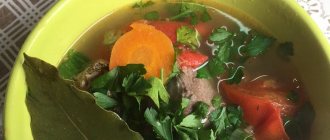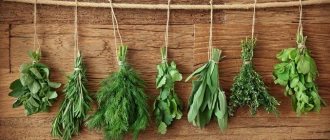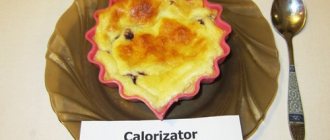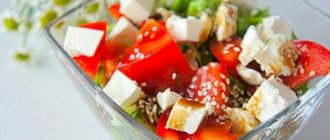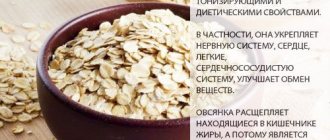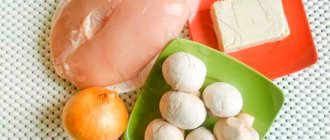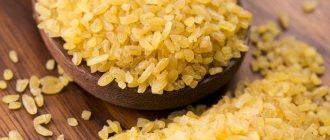Calorie content and nutritional value of dried pitted prunes
100 grams of prunes (about 7 berries) contain:
- 231 kcal or 966 kJ (11% of the daily value);
- 2.30 g protein (3% daily value);
- 0.70 g fat (0% DV);
- 57.5 g carbohydrates (21% DV).
The percentage is based on a daily diet of 2000 kcal.
Please note that these are approximate figures. The calorie content and nutritional value of prunes may vary depending on the type of plum, as well as on the method of its processing.
Calorie content of prunes - use for weight loss - MOGBUZ Polyclinic No. 2
Not all types of dried fruits can be consumed during the diet. An exception is prunes - dried plums with or without pits, mainly Renklod or Vengerka varieties. The product improves digestion, by normalizing peristalsis, it cleanses the intestines of toxins and waste, removes excess water, which helps to lose 2-3 kilograms in 3 days.
Composition and calorie content of prunes
100 g of dried plums contain 240 kcal. Depending on the type of processing and variety, the glycemic index of the product is 25-40 units. Chemical composition of prunes:
| Vitamins, micro- and macroelements | Quantity per 100 g |
| Fats | 0.7 g (1.2%) |
| Squirrels | 2,3 (3%) |
| Carbohydrates | 57.5 g (27.3%) |
| Alimentary fiber | 9 g (45%) |
| Organic acids | 3.5 g |
| Water | 25 g (1%) |
| Ash | 2 g |
| Potassium | 864 mg (34.6%) |
| Sodium | 10 mg (0.8%) |
| Calcium | 80 mg (8%) |
| Magnesium | 102 mg (25.5%) |
| Iron | 3 mg (16.7%) |
| Vitamin A | 10 mcg (1.1%) |
| Vitamin B2 | 0.1 mcg (5.6%) |
| Vitamin B6 | 0,422 (8,4%) |
| Vitamin B9 | 4 mcg (1%) |
| Vitamin C | 3 mcg (3.3%) |
| Vitamin E | 1.8 mcg (12%) |
| Vitamin K | 59,5 (49,6%) |
| Vitamin PP | 1.7 mg (9.6%) |
The benefits and harms of prunes for weight loss
After processing, dried plums retain all the beneficial substances; their concentration is even higher than in fresh fruits, since moisture evaporates during drying. The value of prunes for weight loss is that they:
- treats and prevents constipation;
- improves digestion;
- maintains acid-base balance;
- normalizes blood pressure;
- improves the condition of the skin;
- strengthens the immune system;
- prevents vitamin deficiency;
- restores microflora, cleanses the intestines of feces, radioactive substances, toxins and waste;
- saturates the body with antioxidants, slows down the aging process;
- improves the functioning of the cardiovascular system, prevents stroke, heart attack;
- eliminates depression;
- has a choleretic effect;
- removes excess fluid and salts, relieves swelling, promotes weight loss;
- quickly satisfies hunger.
Nutritionists recommend eating no more than 4–5 prunes per day (about 35–40 g). Exceeding the norm leads to weight gain, since dried fruits are high in calories and contain a lot of fructose.
Prunes have laxative and diuretic properties, so their uncontrolled consumption harms the stomach and kidneys.
Contraindications and side effects
Exceeding the daily intake of prunes when losing weight can lead to the following side effects:
- allergic reactions to dried fruits;
- changes in blood glucose levels;
- flatulence, stool disorders;
- hypotension;
- gaining excess weight;
- exacerbation of chronic heart and kidney diseases.
Prunes for weight loss are contraindicated for the following diseases and health conditions:
- gout;
- diabetes;
- lactation period;
- bloating, diarrhea;
- low pressure;
- obesity;
- urolithiasis disease;
- individual intolerance.
Methods of application
There are several ways to lose weight using prunes. The most effective of them:
- add 4-5 fruits to your daily diet in the first half of the day (due to stimulation of insulin release);
- have a fasting day on dried plums;
- follow a diet with prunes for 3, 7, 10 or 12 days;
- replace one of your daily meals with cocktails, decoctions, infusions or dried fruit dishes.
Diet with prunes for weight loss
An effective way to lose weight using dried plums was developed by F. G. Uglov, a surgeon and academician of the Russian Academy of Medical Sciences (Russian Academy of Medical Sciences). The duration of the diet is 10 days, the result is a weight loss of 3–7 kg, depending on the initial weight and characteristics of the human body. Rules for losing weight on prunes according to Uglov:
- Eat food 5 times a day, strictly at certain hours - 9:00, 11:00, 14:00, 17:00, 20:00.
- Eat 8 dried fruits daily.
- Give up bad habits - smoking, alcohol.
- Drink at least 1.5 liters of still water per day.
- Eat in small portions (up to 250 g), do not overeat.
- Prepare dishes in a gentle way - steam, boil or stew.
- Sleep at least 7–8 hours a day.
- Take more walks in the fresh air.
- Lead an active lifestyle and play sports.
Allowed foods for the daily diet:
- sugar (0.5–1 tsp);
- lean beef, rabbit, chicken fillet, turkey;
- sea fish;
- rye bread (no more than 150 g per day);
- low-fat fermented milk products and drinks;
- low fat cheese;
- eggs;
- cabbage, cucumbers, carrots, eggplants, green beans;
- apples, oranges;
- coffee Tea.
What not to eat when losing weight according to Uglov:
- alcohol;
- sweet carbonated drinks;
- smoked meats, pickles, fatty foods;
- wheat flour bread;
- confectionery products.
Sample one-day diet menu:
- breakfast: a cup of tea (coffee) with 1 tsp. honey or sugar;
- snack: 1 boiled egg, 8 pcs. prunes soaked in water, 1 tbsp. rosehip decoction;
- lunch: 200 g of steamed fish, boiled chicken or turkey meat, 100 g of carrot or cabbage salad, 1 orange;
- afternoon snack: 30 g cheese or cottage cheese, 1 apple or orange;
- dinner: 250 ml of low-fat fermented milk drink (kefir, yogurt).
Fasting day
In 1 day of unloading on prunes, you can get rid of 2 kg of excess weight. Rules for its conduct:
- Pour 500 g of dried fruits with hot water, leave the prunes overnight.
- In the morning, divide the entire volume into 5 parts, eat 1 serving every 2-3 hours.
- In between meals, drink an infusion in which dried fruits were steamed, clean water, herbal decoctions, and unsweetened tea.
- Try to stay at home during the day, rest more, and avoid physical activity.
- In the evening, drink a glass of natural yogurt or low-fat kefir.
Dried fruits with porridge
During a diet, prunes can be added to porridges - oatmeal, buckwheat, millet, rice. Cook them with water, without sugar, salt or oil. Add crushed dried plums (no more than 30–40 g) to the dish 5 minutes before the end of cooking. There are 2 options for losing weight on porridge with prunes:
- Every morning, have breakfast with 100 g of porridge with unsweetened tea. During the day, maintain a hydrobalance (1.5-2 liters of water per day), eat fresh unsweetened fruits, vegetables, lean meat, and low-fat dairy products. The result of the diet will be a weight loss of 3-4 kg per week.
- Divide 500 g of porridge with dried fruits into 5 equal portions and eat every 2-3 hours throughout the day. In between meals, drink still water (1.5–2 liters per day), tea, coffee without sugar, and herbal infusions. The effectiveness of the technique is weight loss of at least 5 kg per week.
With cottage cheese
When losing weight, prunes are also consumed with fermented milk products. According to reviews from those losing weight, on such a diet, weight decreases by 2–4 kg per week. Replace breakfast or dinner with a mixture of cottage cheese and dried fruits. Blend 150 g of low-fat cottage cheese and 4 steamed dried plums in a blender. For breakfast, add 1 tsp. honey
Otherwise, follow the general rules for any weight loss:
- eat in small portions (200–250 g);
- compose the menu from low-calorie foods (vegetables, fruits, lean meat, fermented milk products with a low percentage of fat);
- drink 1.5–2 liters of water per day;
- do not overeat at night;
- play sports.
Kefir with prunes
Nutritionists recommend drinking cocktails made from dried plums and fermented milk drink at night, as they have a laxative effect. It is better to consume them 2 hours before going to bed. For those who feel the diuretic and laxative effect immediately, you can drink the drink shortly before bedtime. The fat content of kefir should not exceed 1.5%. Cocktail recipes:
- 1 tbsp. beat kefir and 3-4 dried plums in a blender;
- 30 g of finely chopped prunes, pour 200 g of kefir, leave for an hour;
- steam 50 g of dried fruits, chop, mix with 150 ml of kefir.
Decoction recipes
To prepare sugar-free cleansing drinks, you can use not only dried plums, but also a mixture of dried fruits for weight loss. The most effective recipes:
- Boil 500 ml of water, add 150 g of washed raisins and prunes. Boil for 15 minutes, cool and strain. Drink 1 tbsp decoction. l. every morning. Raisins can be replaced with dates.
- Bring 0.5 liters of water to a boil, add 100 g of washed prunes and 200 g of dried apricots. Boil for 10 minutes, cool, strain. Drink half a glass every morning.
- Pour 300 g of prunes and 50 g of buckthorn bark into 1.5 liters of water, boil, cook for 25 minutes. Add 100 g of rosehip, cook for another 45 minutes. Leave in a thermos for 10 hours. Drink 200 ml daily before bed.
- Combine 100 g of chopped beets, rolled oats and prunes, pour in 2 liters of water, bring to a boil and cook for 1 hour over medium heat. Strain, drink 1 tbsp daily. decoction before bed.
Adblockdetector
Source:
Prunes calorie content per 100 – Calorie content of prunes – use for weight loss
- dried, seedless, kcal per 100 grams
- Prunes - calorie content, beneficial properties, benefits and harms, description
- Calorie content of Prunes. Chemical composition and nutritional value. Nutritional value and chemical composition of “Prunes”.
Today there are a large number of different dried fruits on sale.
You can make a delicious salad or compote from them. Many dried fruits are quite sweet, so some people consume dried fruits as natural sweets. One of the most popular dried fruits is prunes.
But what is the calorie content of prunes? What are the benefits and harms of this dried fruit? And what do nutritionists say about eating prunes? Below you will find the answers to these questions.
Basic information about prunes
Prunes are a dried fruit obtained by drying plums. Most often, ripe black plums of the Hungarian or Renklod variety are selected for drying.
After harvesting, the plums are thoroughly washed and placed on a wide metal tray. After this, the metal tray with plums is covered with gauze and taken outside.
Prunes are dried in the summer after harvest, and the drying period is usually 3-4 weeks.
After drying, the pits are removed from the prunes, and the fruits themselves are treated with glycerin. During drying, the fruits dry out greatly, and to prepare 1 kg of prunes you need 5 kg of plums.
After drying, prunes acquire a characteristic tart taste, but all useful vitamins and microelements remain in the prunes during drying. Prunes are widely used in cooking.
Prunes are used to make sweet products and savory salads.
Calorie content and nutrients per 100 grams, Table
Prunes are a high-calorie product, so not all people can eat this dried fruit. The calorie content of prunes does not depend too much on the type of plum.
The calorie content of 100 g of prunes is approximately 240-250 kilocalories, and 1 prune weighing 15 g will have a calorie content of 35-40 kcal.
The composition of prunes includes proteins, fats and carbohydrates, as well as potassium, iron, phosphorus, B vitamins, vitamin C and so on.
Source: https://gp2.su/lekarstva/kalorijnost-chernosliva-primenenie-dlya-pohudeniya.html
Chemical composition and beneficial properties
100 g of dried pitted plums can contain up to 73% of the daily value of sugars (glucose and fructose) and about 35% of dietary fiber.
| Element | Content (mg) | % of daily value |
| Vitamins | ||
| E | 1,77 | 11,95 |
| PP | 1,69 | 8,46 |
| B2 | 0,13 | 5,58 |
| C | 3,23 | 3,41 |
| Microelements | ||
| Potassium | 865,02 | 34,58 |
| Magnesium | 104,65 | 25,23 |
| Iron | 3,24 | 16,82 |
| Phosphorus | 84,12 | 10,36 |
| Calcium | 82,08 | 7,78 |
In addition, this dried fruit provides the body with 9 essential amino acids, including up to 9% of the daily value of tryptophan (an amino acid used by the brain to produce serotonin, the so-called “happiness hormone”).
Other beneficial properties of prunes:
- due to the content of coarse dietary fiber, dried fruit has a beneficial effect on the gastrointestinal tract, in particular, it treats constipation and cleanses the intestines of toxins, absorbs excess water;
- Potassium in the fetus is involved in the activity of the cardiovascular system, regulates muscle contraction and lowers blood pressure. Potassium also normalizes water-salt balance in the body;
- B vitamins have a positive effect on the nervous system, reduce anxiety and stress. Thus, prunes are a natural antidepressant;
- iron in dried fruit prevents the appearance of anemia;
- antioxidants contained in prunes increase immunity and body resistance, and also have antibacterial properties;
- prunes help eliminate bad cholesterol, and pectins, which are part of the dried fruit, absorb free radicals and absorb harmful substances, including heavy metals, rejuvenating the body and preventing the development of cancer.
Energy and biological value of prunes
The natural benefits of prunes, known since ancient times, fully comply with modern requirements for a healthy and balanced diet. Its nutritional qualities are based on 3 components: carbohydrates, dietary fiber, a variety of vitamins and minerals.
The nutritional value of prunes varies depending on where the fruit is collected and the drying method. For example, the nature of the soil determines the level of nutrients such as boron. But if we summarize the indicators, then the energy value of 100 grams of prunes is 960 kJ.
Nutritional value is formed by:
- water - 36 g; fiber - 7 g; sorbitol - 29.6 g; protein - 1.96 g; lipids - 0.26 g; carbohydrates - 60.6 g; fructans - 300 mg;
- microelements: potassium - 621 mg; magnesium - 30 mg; phosphorus - 70 mg; calcium - 49 mg; sodium - 0.84 mg; iron - 2.13 mg; boron - 1.0 mg; zinc - 0.51 mg;
- vitamins: C – 1 mg; B1 - 0.80 mg; B2 - 0.06 mg; B3 - 1.13 mg; beta-carotene - 0.47 mg; B5 - 0.27 mg; B6 - 0.16 mg; K - 4.3 mcg;
- organic acids: quinic – 4100 mg; apple – 290 mg; shikimovaya – 280 mg; chlorogenic – 8 mg;
- Prunes are a fruit rich in carbohydrates and very low in fat and protein. Carbohydrates break down: glucose - 42.7; fructose - 25.6; sucrose - 1.6; sorbitol - 29.6; starch - 0.4.
Sucrose is deficient (1.6% carbohydrate) because it is hydrolyzed during drying by enzyme activation.
Prunes are distinguished in the plant world by their high content of sorbitol (30% carbohydrates), a polyol that is slowly absorbed by the body. The abundance of this compound explains the weakness of the glycemic index (the rate of absorption of carbohydrates), as well as the presence of boron, dietary fiber and polyphenols.
Prunes contain small amounts of fructans (0.3%), much less than raisins (7%), but much more than apples, pears and bananas. Fructans are polymers of fructose that pass through the small intestine without digestion and enter the large intestine, where they are fermented by microbiota and stimulate intestinal flora.
Prunes are one of the foods rich in fiber (6-7% pulp). The fibers are broken down into soluble (57% of the total), rich in pectin, and insoluble (43%), consisting of cellulose and hemicellulose. Fiber is well known to facilitate intestinal transit, but it also helps lower the glycemic index and LDL cholesterol levels.
Dried plums contain a very wide range of minerals (iron, magnesium, potassium, boron) and vitamins, including antioxidants (A and E). They are highly valued for their protective properties, their ability to scavenge free radicals that cause cellular degeneration.
ORAC index
A study conducted by Professor R. Prior's team at Tufts University in Boston developed the ORAC index. The results of this study show that prunes have the greatest free radical scavenging capacity of all fruits and vegetables.
The oxidant activity (ORAC µmol TE/100 g) of some vegetables and fruits gives a clear idea of the benefits of prunes in the fight against the inexorable time:
- prunes - 5770;
- blueberries - 2400;
- blackberry - 2036;
- spinach - 1260;
- Brussels sprouts - 980;
- broccoli - 890;
- beets - 840;
- orange - 750;
- corn - 400;
- eggplant - 390.
The indicators speak for themselves - prunes have the greatest antioxidant activity. It is surpassed only by seedless golden raisins, with a surprisingly high index of 10140, which is due to the use of sulfur dioxide SO 2 in production, which inactivates polyphenol oxidases. But the technological method is not without its drawbacks, so prunes become the undisputed leader of useful products that affect cell regeneration.
Glycemic index
The time it takes the body to absorb carbohydrates from food is called the glycemic index. It is usually measured on a 100-point scale, in which 0 is the minimum, 100 is the maximum. Products with a high index quickly give up their energy. A low glycemic index indicates the fiber content, which reduces the rate of absorption of energy-rich substances.
Prunes contain on average 20 to 25 kcal. Energy comes almost exclusively from carbohydrates. It contains very little protein and even less lipids. The unique distribution of carbohydrates between glucose, fructose and sorbitol gives prunes a moderate glycemic index of 52.
Dietary fiber in prunes
Prunes do contain a significant amount of fiber (average 7 g per 100 g), harmoniously divided between soluble fiber (40 to 50%) and insoluble fiber (50 to 60%). The first ones are very well tolerated by the body and give prunes their characteristic “softness”. They have a strong water-retaining ability and have a beneficial, gentle effect on intestinal transit.
Insoluble fiber plays a “mechanical” role, speeding up and stimulating bowel functions, like a soft brush.
Harm and contraindications for use
Excessive consumption of perhaps any product can cause allergies or other unpleasant consequences. Thus, overeating prunes can cause indigestion, as they have a fairly strong laxative effect.
The use of this dried fruit also has a number of contraindications:
- obesity;
- diabetes;
- chronic indigestion and gastrointestinal dysfunction;
- hypotension;
- pregnancy and breastfeeding.
For a healthy person, the recommended amount of prune consumption per day is 100 grams.
Use for weight loss
Despite the high calorie content, prunes have a fairly low glycemic index and can be eaten when fighting excess weight.
Benefits for weight loss:
- It has pronounced laxative and diuretic effects.
- The sweetness of this dried fruit can replace sugar in cereals and desserts.
- Prunes keep you feeling full for a long time and serve as an excellent snack.
- The richness of vitamins and microelements makes it possible to use prunes as a product for a short-term mono-diet or a fasting day.
The use of prunes for weight loss
Many nutritionists advise eating prunes for weight loss. This is due to its rich vitamin composition with a relatively low calorie content and the ability to have a beneficial effect on the body’s metabolic processes.
Thus, prunes are included in fruit and berry and mixed diets, which, as a rule, give quick and lasting results. If you do not adhere to special diets, prunes also promote weight loss. To do this, it is recommended to follow the following rules:
- Eat 4-5 dried plums a day to reduce appetite and normalize blood sugar levels;
- Eating prunes before a meal, not after it, allows you to reduce the volume of the main dish;
- Use dried plums for “quick snacks”. A mixture of prunes, dried apricots and nuts is also suitable for these purposes;
- Prepare porridge with the addition of prunes.
Recipes with prunes
Dried plums are actively used in cooking, as their taste characteristics combine with almost any ingredient.
Examples of delicious and easy-to-prepare dishes using prunes:
Quick and tasty dessert with prunes and walnuts
Ingredients:
- 200 g sour cream
- 100 g prunes
- 50 g walnuts
- 50 g sugar (can be replaced with a couple of teaspoons of honey)
Preparation:
- First you need to steam the prunes by pouring boiling water over them for 5-7 minutes.
- When the dried fruit becomes soft, cut it and push half a walnut into the cavity.
- Beat sour cream with sugar or honey with a mixer until fluffy.
- Place the stuffed dried fruit in bowls or bowls, fill with sour cream mixture and refrigerate for 3-4 hours.
- Sprinkle chopped walnuts on top and enjoy a delicate dessert without harming your figure.
Turkey stuffed with prunes
Ingredients:
- 500 g turkey fillet
- 50 g prunes
- 3-5 pcs. walnuts
- ½ lemon
- 30 g cheese
- 3 tbsp. l. breadcrumbs
- 2 tbsp. l. olive oil
- herbs and spices to taste
Preparation:
- In a separate bowl you need to mix: chopped nuts, prunes, finely grated lemon zest, grated cheese, breadcrumbs, butter and lemon juice.
- Cut the turkey into steaks and pound a little.
- Place the resulting mass on the meat, roll it into a roll and tie it with flagella.
- Bake the rolls in the preheated oven for 40 minutes.
- You can check the readiness of the dish by piercing the meat with a toothpick.
- If the juice flows out clear, the turkey is ready.
- Before serving, the rolls should be cut into slices.
- The dish can be eaten both hot and cold.
Salad with chicken and prunes
Ingredients:
- 2 pcs. chicken fillet
- 6 pcs. prunes
- 1 cucumber
- 3-4 walnuts
- 5 eggs
- mayonnaise and herbs to taste
Preparation:
- Initially, you need to boil the chicken fillet with salt and spices until cooked and let it cool.
- You also need to boil the eggs and soak the prunes for 15-20.
- The chicken must be finely chopped and placed on a plate in an even layer.
- The crushed dried fruit should be divided into 3 parts and placed on top of each layer.
- All layers are also coated with a small amount of mayonnaise.
- The second layer is cucumbers cut into strips.
- Next, add the grated eggs.
- At the end, sprinkle the salad with chopped nuts and herbs and put it in the refrigerator for a couple of hours so that all layers are soaked and stick together.
How many calories are in 1 prune?
If we assume that one berry weighs 10-15 grams then:
Calorie content of 1 prune is:
What are the benefits of prunes for weight loss?
And more on this topic:
According to research, it is enough to eat 1-2 berries before meals and you can get by with a noticeably smaller portion of the main dish. After eating prunes, insulin and blood glucose levels are lower than after snacking on sweet cookies. Research by American scientists has confirmed the fact that prunes help reduce the level of fats (triglycerides) in the blood.
Another important point: prunes are a source of dietary fiber (just 5 berries contain 3 g of fiber). Fiber is necessary for the body for the proper functioning of the gastrointestinal tract (it’s not for nothing that prunes are considered a natural laxative). Due to this action of dried fruits, the fats supplied with food do not have time to be completely absorbed (this prevents excess intake of calories, but does not affect existing fat deposits).
How to choose and store prunes correctly?
The appearance of prunes can indicate a violation of its production and storage. To ensure that dried plums bring maximum benefit, be sure to pay attention to the following points when purchasing:
- The dried fruit should be black and have a slight shine. Deviation from the norm is a blue or coffee tint of the fruit, as well as excessive shine;
- prunes should not leave dark marks on the skin if you lightly rub them on your hand;
- The fruits should not be too hard or sticky. Dried plums should remain fleshy and elastic.
But choosing the right prunes is not enough. To prevent dried fruit from spoiling and acquiring harmful properties, you must follow the following rules:
- correct container: vacuum container or bag, sealed glass jar;
- correct conditions: dark, cool place, recommended temperature - up to 10°C. The ideal option is a refrigerator for storing vegetables.
- You should not store prunes in paper - there they will dry out, and in a plastic bag - harmful microflora develop well in the humidity. The heat will also encourage bacteria to grow in the sweet flesh of the fruit.
Prunes are a healthy product containing many vitamins and microelements that have a positive effect on the gastrointestinal tract and cardiovascular system, helping to eliminate toxins, waste, excess fluid, and also improve mood.
Note! Despite its high calorie content, dried plums are widely used in dietetics and are a popular ingredient in cooking.
To get the maximum benefit from eating prunes, you need to take their purchase and further storage seriously.
Treatment of prunes with preservatives
Only a few global producers follow the classic technology for making prunes. To maintain an attractive appearance for a long time and protect against mold, fruits are treated with preservatives and other substances that are incompatible with food. The most “harmless” are sulfur dioxide – E220, caustic soda – E524, potassium sorbate – E202. You can often find traces of glycerin, detergents, and insecticides in prunes.
Prunes produced with gross violations of the technological process or treated with preservatives pose a potential danger to the health and life of the consumer. While maintaining appearance, producers pay little attention to the pathogenic environment that freely forms on the fruits.
Mycotoxins are the most common problem with dried fruits. A secondary product of fungal metabolism, they have a number of negative properties. A high degree of carcinogenicity, the ability to mutation and incredible adaptation to any conditions make mycotoxins the most dangerous biological compounds for the human body.
But the level of microbial danger depends not only on the methods of drying and processing prunes. As the plum matures, toxins can accumulate in the plum. This fact is influenced by geography, groundwater quality, climatic conditions, stage of maturity, etc.
As a result of testing prune samples, scientists made disappointing conclusions. According to microbiological indicators, only 1 species out of 20 meets the standards:
- the dominant bacteria in prunes are the fungi Bacillus, Aspergillus and Penicillium;
- prunes from Asian countries are not contaminated with E. coli and do not contain preservatives, but for mushrooms the indicators exceed the norm by thousands of times.
Methods for determining microorganisms in prunes
Prunes must comply with the standard TU 10.39.25-038-52230123-2016. For the study, the Koch plate method is used - a differential diagnostic method using nutrient media:
- agar (PA) – to determine the number of mesophilic aerobic and anaerobic microorganisms (KMAFAnM);
- Saburo and Chapek - to identify mushrooms and yeasts;
- endo – for Escherichia coli (coliforms);
- bismuth sulfite agar (BSA) and Ploskirev’s medium – for the detection of Salmonella.
Bacteria are identified by morphological and chemical-biological characteristics.
Determination of ascorbic acid in prunes
The content of ascorbic acid in prunes is an important indicator of its quality. There is less of it in dried fruits than in fresh plums (in 100 g of fresh fruit - 13.6% of the daily value, in prunes - 5%). However, this is quite enough to, in combination with other elements, have a beneficial effect on the body.
Determination of vitamin C in prunes is carried out by titration using a solution. An exact weighed portion of the fruit is transferred to a volumetric flask, adjusted to the mark with water, mixed and filtered. Solutions of hydrochloric acid, potassium iodide, and starch are added to the selected sample.
Depending on the amount of potassium iodate consumed, the ascorbic acid content is calculated.
Choosing the right prunes
For consumers, experts give the following recommendations:
- pay attention to the composition of prunes, especially the presence of preservatives - an excess amount indicates that the dried fruit has no vitamin value;
- the lack of preservatives should also be alarming - this provokes the growth of mycelial microflora;
- pay attention to the expiration date and production date (prunes retain their properties only for 1 year).
Simple purchasing rules will help you choose the optimal product that meets all natural properties.


